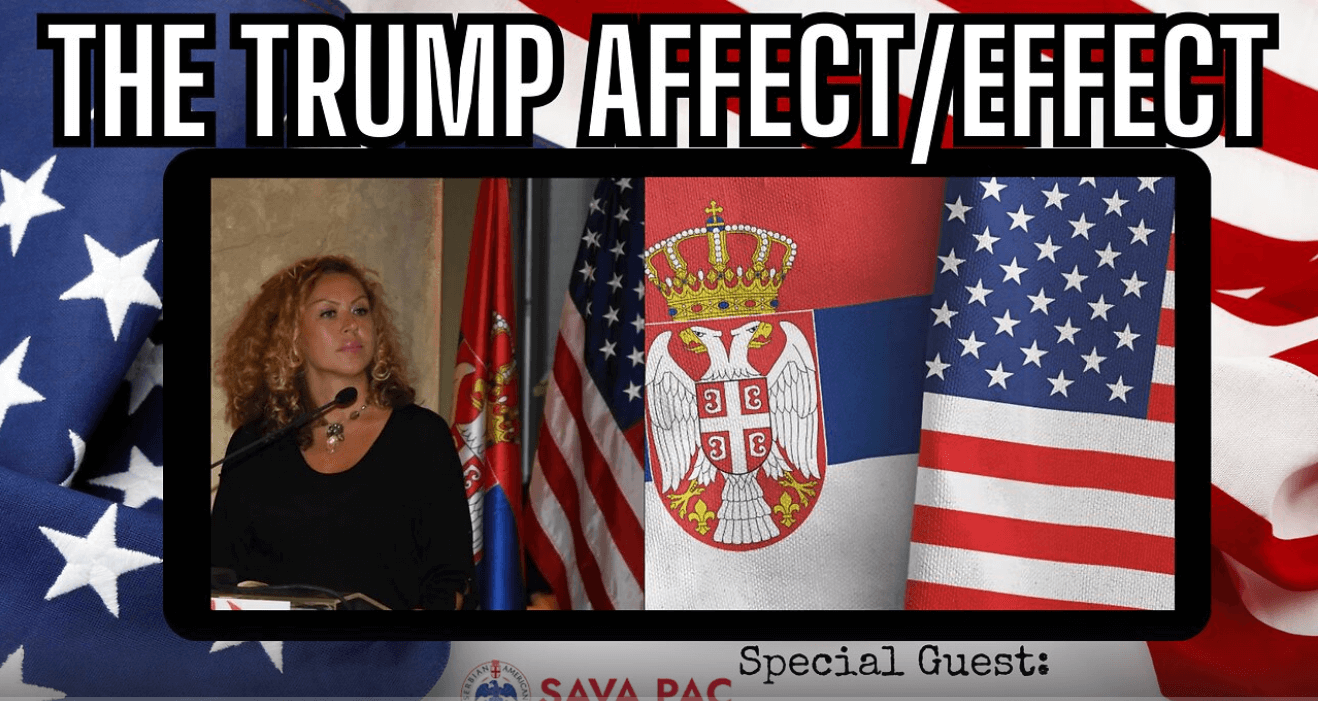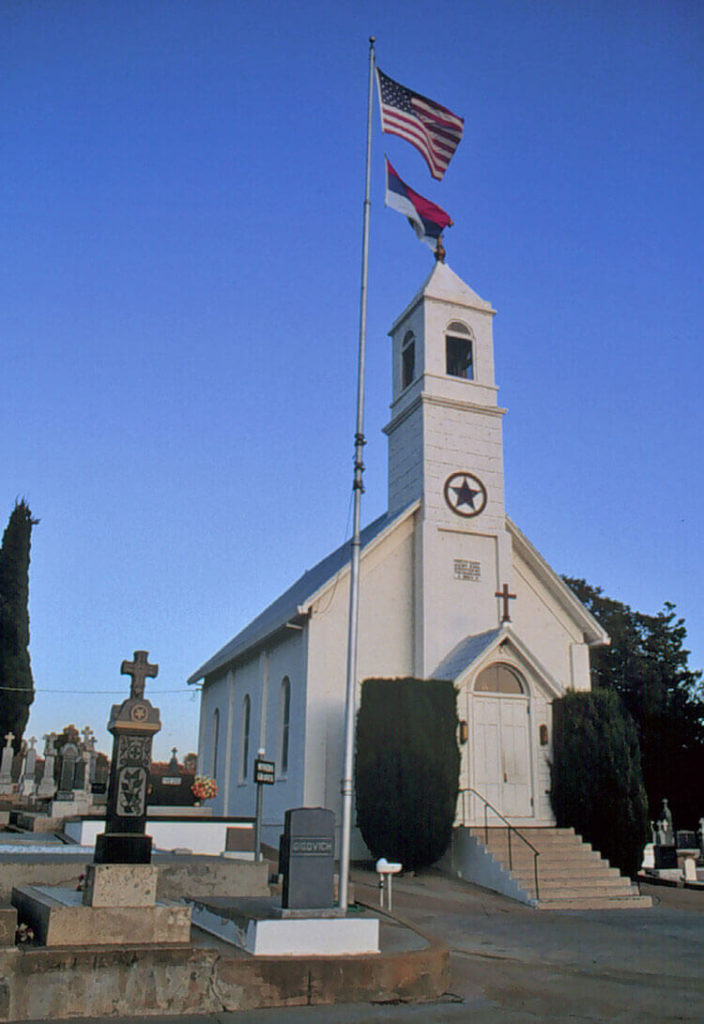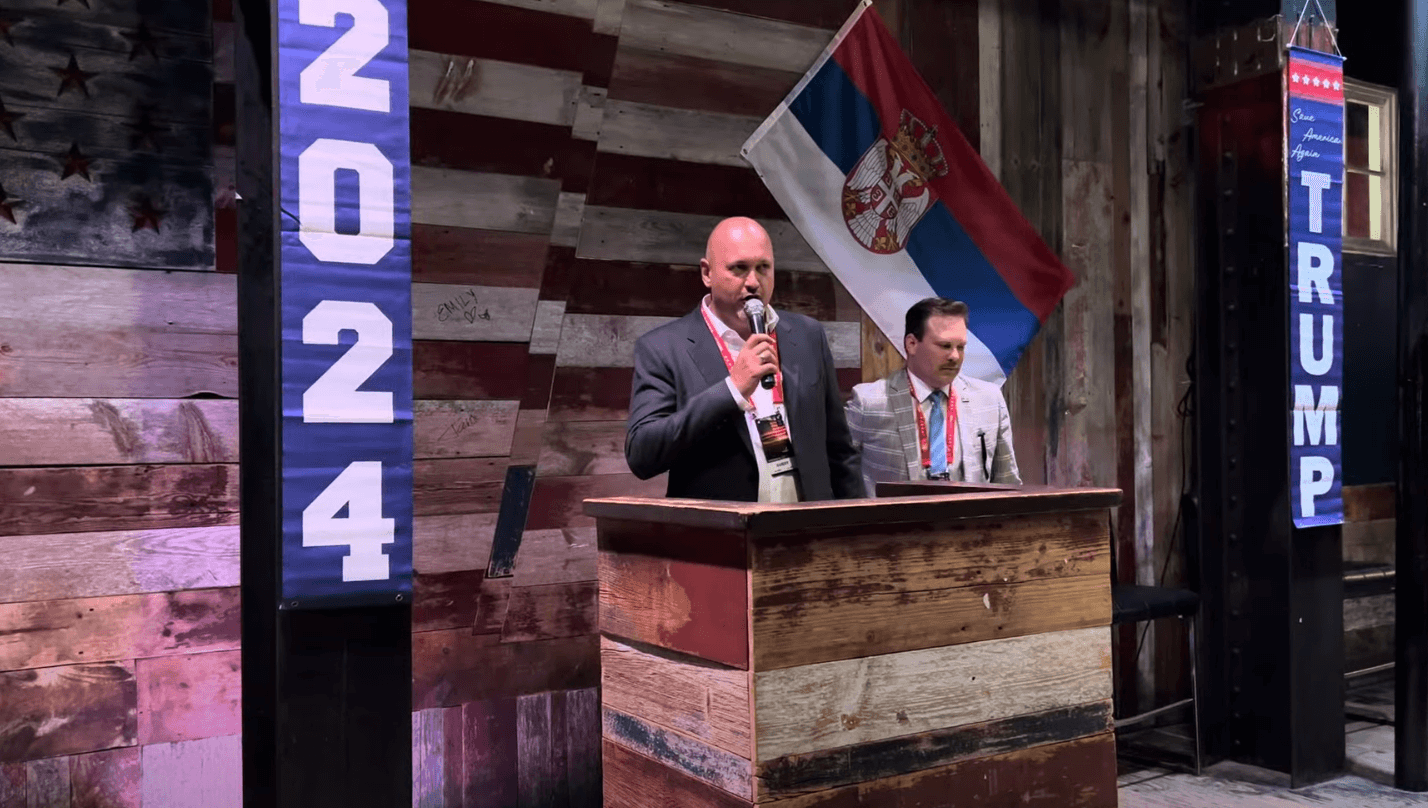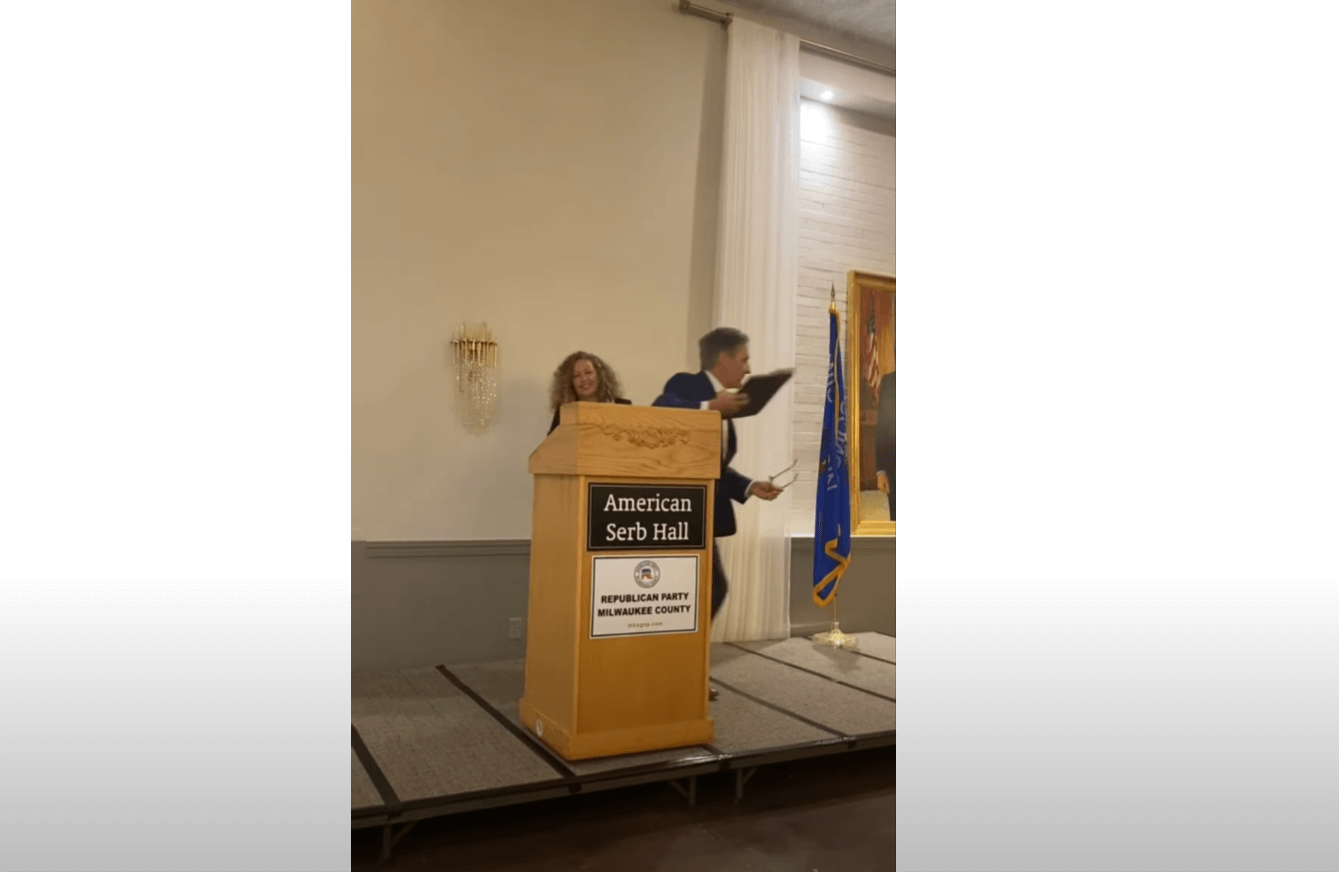
The TRUMP Affect/Effect on Global Stability w/ Special Guest Dr. Olga Ravasi
The TRUMP Affect/Effect on Global Stability w/ Special Guest Dr. Olga Ravasi In this post I am expressing my 1st Amendment Right of #FreeSpeech
Serbs consider the Church an institution that connects them with their rich historical heritage. Since the beginning and the Serbian Church’s independence (800 years ago), they have remained inseparable from the Church. It was their power source in overcoming obstacles and attacks on their religion and nation. The same was with The Serbian Orthodox Church in the United States. For American Serbs, the Church was much more than a place where people gathered and prayed. The Church helped them to keep their identity and strive toward eternity.
The Serbian Orthodox Church is one of the Eastern Orthodox Christian churches; it shares much with other Christian Churches but differs substantially in the way of life and worship.
The Church is the foundation of every believing Orthodox Serbian.
Having 800 years of history makes it unique (it became autocephalous in 1219). But it’s much more than that; the Church’s role in Serbian history was pivotal. All the social institutions were usually centered around her.
Orthodoxy and its legacy shaped Serbian culture.
Spiritual over material and giving before taking was the core of philosophy and way of living for Serbs. The leaders, saints, literature, art, and architecture reflected these ideals.
Faith remained a source of power and meaning to Serbs, especially during the hard times, occupation by Turks, rule of Austrians, or World Wars, even when their faith was “forbidden” under the communist regime.
Despite every adversity, their faith kept them alive and gave them strength and love to fight for freedom and be on the side of truth at the cost of losing earthly things.
Likewise, faith helped American Serbs a lot during their hard times. Imagine how difficult it was for them to travel across the world in search of a better life. There were hardly any writings to help them. And there was no Google or Netflix to inform them about American culture.
But the faith that everything would be all right kept them going.
In the early days, Serbs usually practiced ceremonies and rituals in other Christian churches (mainly in Slavic) in the US. Until the first (and afterward dozens of others) Serbian Orthodox Churches were built.
It was 1894 when the Saint Sava Church was built in the town of Jackson, California.

It wasn’t long before other churches were established in Galveston (Texas) or the industrial East, Pennsylvania, Ohio, Michigan, and the Midwest, Illinois, Indiana, Minnesota, and Montana.
Thanks to the community’s efforts, the establishment and growth of the Serbian Church were evident. Yet, some individuals significantly contributed:
Saint Archimandrite Sebastian Dabovich was the first Serbian Orthodox priest born in the United States. He built St. Sava Church in Jackson and helped many Orthodox communities in the US. In 2015, the Church named him a saint, and his relics rest in Jackson.
Saint Bishop Nikolaj Velimirović was placed on the calendar of saints in 2003. He was famous for his eloquent preaching and became an influential leader and spokesperson for the Serbian Orthodox Church in its relations with the West.
He was imprisoned and taken to a Dachau concentration camp in Germany during WWII. After his liberation, he went to the United States.
Despite some controversies, his legacy remained undeniably great. He is remembered as one of the most ingenious Serbian orators, theologians, and the most prominent Serbian Church writer and thinker.
Saint Bishop Mardarije Uskoković served as the first Serbian Orthodox bishop in the United States and Canada. He was proclaimed a saint in 2015.
As a canonical and hierarchically integrated part of the Serbian Orthodox Church (Patriarchate), the Serbian Orthodox Church in North, Central, and South America holds its See in Belgrade.
The administration of external church affairs is under the administrative autonomy of US dioceses.
At present, there are more than 120 parishes, over ten monasteries, and a theology school organized into three US dioceses:
You can find each one’s location in the United States here.
The Serbian Orthodox Church’s work in the US wasn’t merely a spiritual thing; they’d helped many believers in one way or another.
Yet, not everything inside the Church was ideal. The Serbian Orthodox community was affected by the political changes in Yugoslavia after WWII. The position of the Serbian Church in Yugoslavia and the Diaspora differed.
Let’s say that the one in the United States was free.
And the power of Serbian immigration in the United States was a potential threat to a Yugoslavian regime. Therefore, they came up with a plan to split two churches apart. The idea of forcing the conflict between the Bishop of the American-Canadian Dionysius and the Patriarchate in Belgrade proved successful.
The overthrown of Bishop Dionysius in 1963 was the culmination of all of this. Unfortunately for the Serbs, they’ve divided again, ideologically and politically. During the next three decades, Serbs in the US experienced violent fights, the dissolution of families, and the end of longstanding friendships.
The Church’s schism has weakened the American Serbs.
In the end, the details are not necessary, nor whose fault it was. We must learn from our past and not allow similar things to happen again. That’s why it’s on us to get a strong and united voice in shaping the major decisions that affect our lives in the US.
Any whining about Democrats, Republicans, the opposition, or the Deep state is pointless unless we take the right actions.
They’ll speak louder than any words. And they’ll provoke positive changes.
Do you believe that the Serbian American community is under-respected?
If that’s the first thing you think right now, we invite you to read about solutions.
You can find more about us on our website. If you can’t do it right now, that’s also fine. We’ll keep spreading the word about American Serbs to achieve our goal.
It’s time for us to organize and unite to improve our lives and position in the United States.

The TRUMP Affect/Effect on Global Stability w/ Special Guest Dr. Olga Ravasi In this post I am expressing my 1st Amendment Right of #FreeSpeech

Serbs for Trump 2024 Deliver Wisconsin at the RNC Serbs for Trump 2024 team launches the Deliver Wisconsin initiative at the Republican National Convention, with

We The People 2024 Milwaukee Serbs for Trump 2024 campaign kick-off in partnership with the Milwaukee County GOP at the historic American Serb Hall, featuring
© SERBIAN AMERICAN VOTERS ALLIANCE (SAVA PAC) 2023. All Rights Reserved.
proudly developed by Serbian-American patriots at Executive Digital